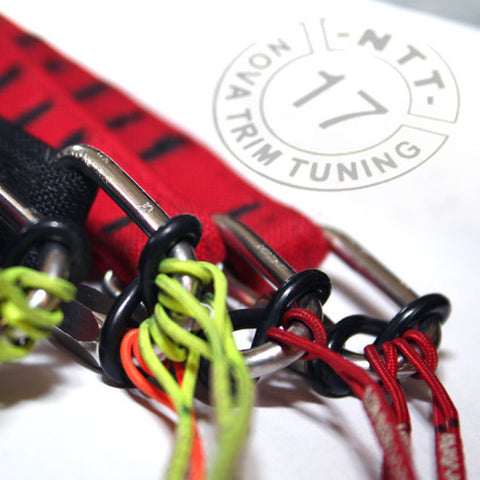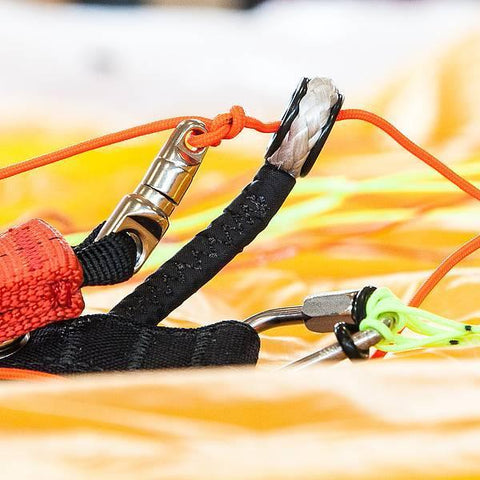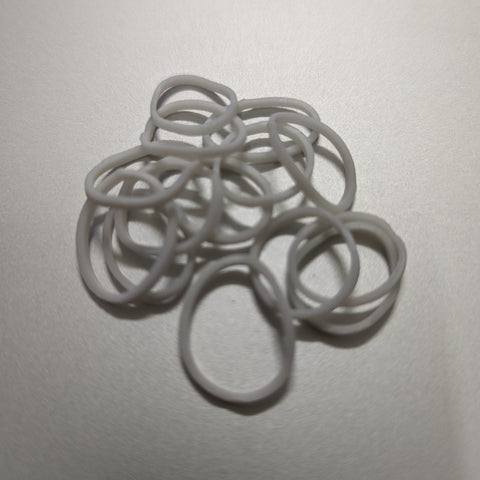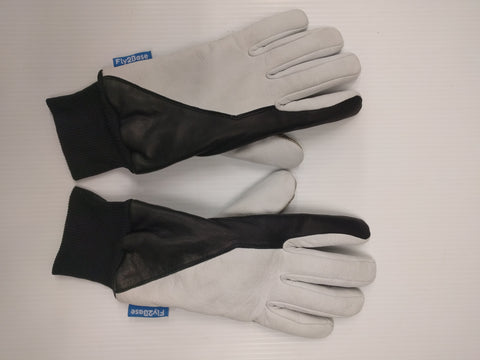
Service - Line Trim Tuning
PRICE: $250 extra $30 for soft links (plus return shipping $30)
Lead Time: 3 months
Turn Around Time: 2 weeks
Paragliding Line Trim Tuning Service
This service is suitable for gliders that are less than two years old. If your glider is more than two years old it is more suitable to book the Full Service for your paraglider.
This service aims to check your paraglider's trim within the first 20-40 hours and reset the line trim to the factory trim if necessary.
The test results will be part of the Line Trim Tuning report. You will receive all the before and after measurements and the changes made.
Before proceeding with the service, we will test whether the glider is airworthy. If the glider is not airworthy, we will contact you before proceeding with the line trim tuning service to discuss possible options. As a part of this service, we will also do a "One Point Porosity Test" on the top midsection of the leading edge and a "Fabric Degradation Test" for all fabrics/colours used on your glider, plus a Stitching Strength Test. You will be provided with a Line Trim Tuning Report.
We will check the following.
- Line length measured, checked, and adjusted.
- Fabric Porosity Test on 1 point (PASS/FAIL)
- Fabric Degradation Test Top and Bottom Sail (PASS/FAIL)
- Stitching Strenght Test Sail (PASS/FAIL)
When is the best time to book Line Trim Tuning?
Book the service as soon as you have received your new glider. With a 4-6 months lead time, your glider will have 20-40 hours on it, and the lines will be fully settled. We recommend checking your Line Trim when you have reached 20-40 flying hours with your glider. After the Line Trim Tuning Service, your glider will fly like new or better again for the next 100+ hours.
When you place your booking, please let us know the Model and Size of your glider in "Order Notes" in the "Check Out" section, for example, Mentor 7 S, Tenor M 21, Base 2 M. We will need to know the model and size of your glider so we can get the trimming table ready before your glider gets here. Thank you.
Through the use, paraglider lines shrink or stretch. Generally, the A and B lines stretch a little or do not shrink as much, whereas the C lines shrink at a faster rate. As a result, your glider starts flying slower, and the handling becomes less agile after the first 20-40 hours of airtime on your new glider. All lines are affected in this way – regardless of material or manufacturer. This line stretching and shrinking process is complete once you have reached about 40 hours of airtime on your wing; after that, the changes in the line length will be minimal.
To ensure that your glider flies as new and offers the same safety as a brand-new glider, we will measure all the lines and analyse the trimming using special software developed by paragliding instructor and mathematician Ralf Antz. The line trim of your glider is then reset to the original manufacturer's trim.
"We will make your paraglider fly like new or better again."
Please send your glider via Australia Post to our Postal Address one week before your booking date for your glider for service.
FEEDBACK
I was thinking of you today while having an awesome flight. What you have done with my lines has given me a much more balanced wing and way more enjoyable to fly.
I really appreciate the effort you put in for me. Alec Barrass
LINE TRIM TUNING ANALOGIES FROM DIFFERENT WALKS OF LIFE
- Are you a musician?
- How often do you tune your guitar?
- How often do you tune your instrument with a string?
- Do you drive a car?
- Do you balance the new tyre?
- How often do you do a wheel alignment?
✂️ Do Modern EN Gliders Still Need Trimming? ✂️
Over the past few years, manufacturers have come a long way in improving line stability. Materials have improved, designs have evolved, and many gliders now come from the factory slightly faster to offset initial line shrinkage. Some even use mixed line materials to delay the effects of trim drift.
As a result, I’m seeing more gliders with 20–40 hours still within factory tolerance. That’s a big step forward!
👉 But here’s the thing:
Even though lines may technically still be "in spec," there's almost always room for improvement in trim around the 20-hour mark. If you don’t trim at 20 hours, chances are your glider will drift out of spec by the time it hits 100 hours. If you fly around 100 hours every two years, that’s not a big deal — your scheduled full service will take care of it.
But if you're logging 100+ hours a year, you might be flying out of trim for an entire year before your next service. That’s a lot of airtime on a glider that’s not flying quite like it should.
🪂 What does this mean in real terms?
In my experience — and based on feedback from pilots I’ve trimmed gliders for — not trimming your EN B glider won’t usually cause a major safety issue. But the difference in handling, pitch stability, and overall glide can be noticeable. A freshly trimmed wing just feels better — more responsive, more balanced, more like new.
💡 Think of it like wheel balancing on your car:
You don’t have to balance your wheels all the time. The car will still get you from A to B. But a properly balanced wheel gives you a smoother, safer, more predictable ride — especially if you're pushing limits. The same goes for gliders.
🚨 Important note:
Trimming only works on lines that have settled. You can’t trim a brand-new glider effectively. But once those lines have had time to settle (usually 20–40 hours), a trim will often last 100–150 hours, depending on the line type.
If you're flying regularly and want your glider to perform like it did on day one, don't underestimate the value of a good trim.
We Also Recommend





